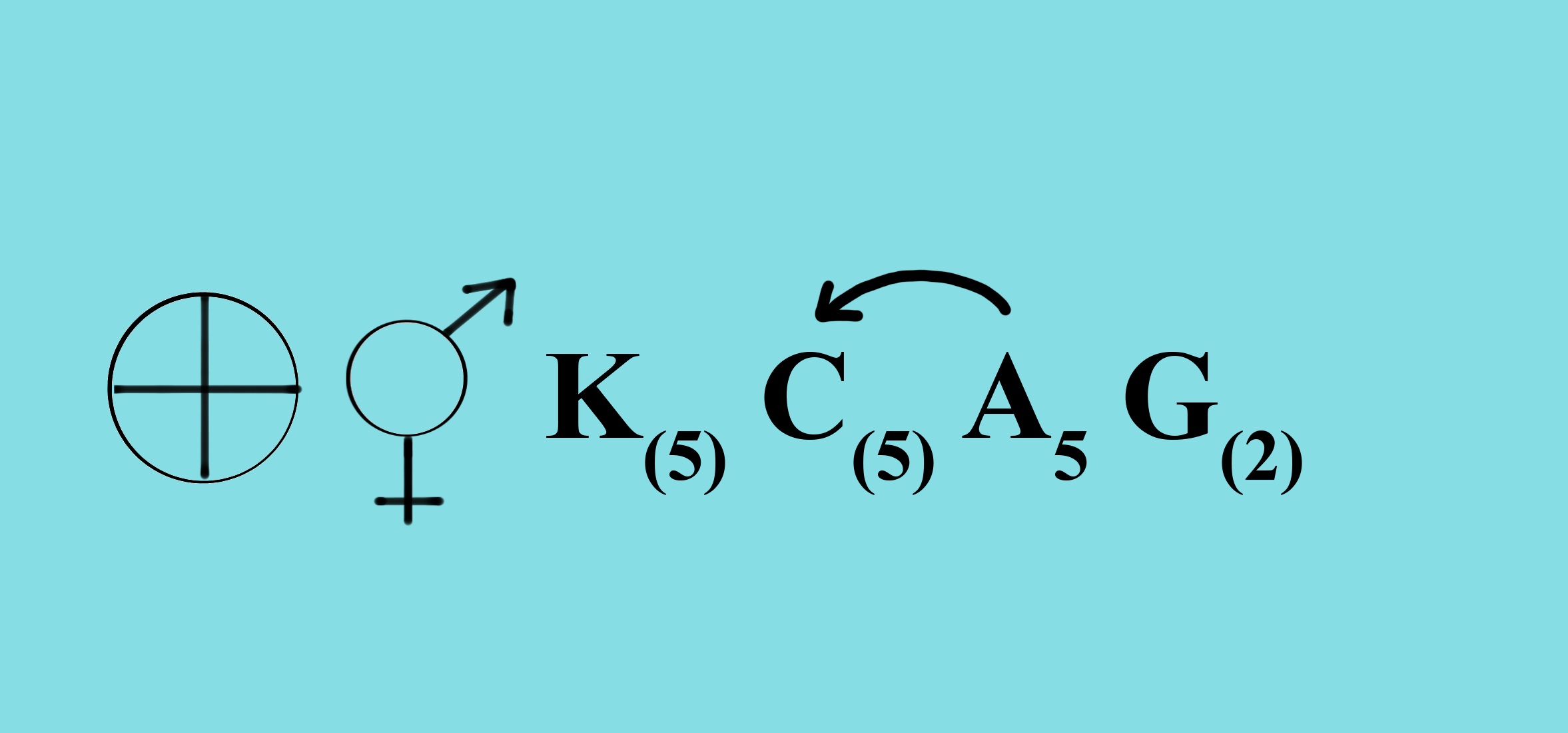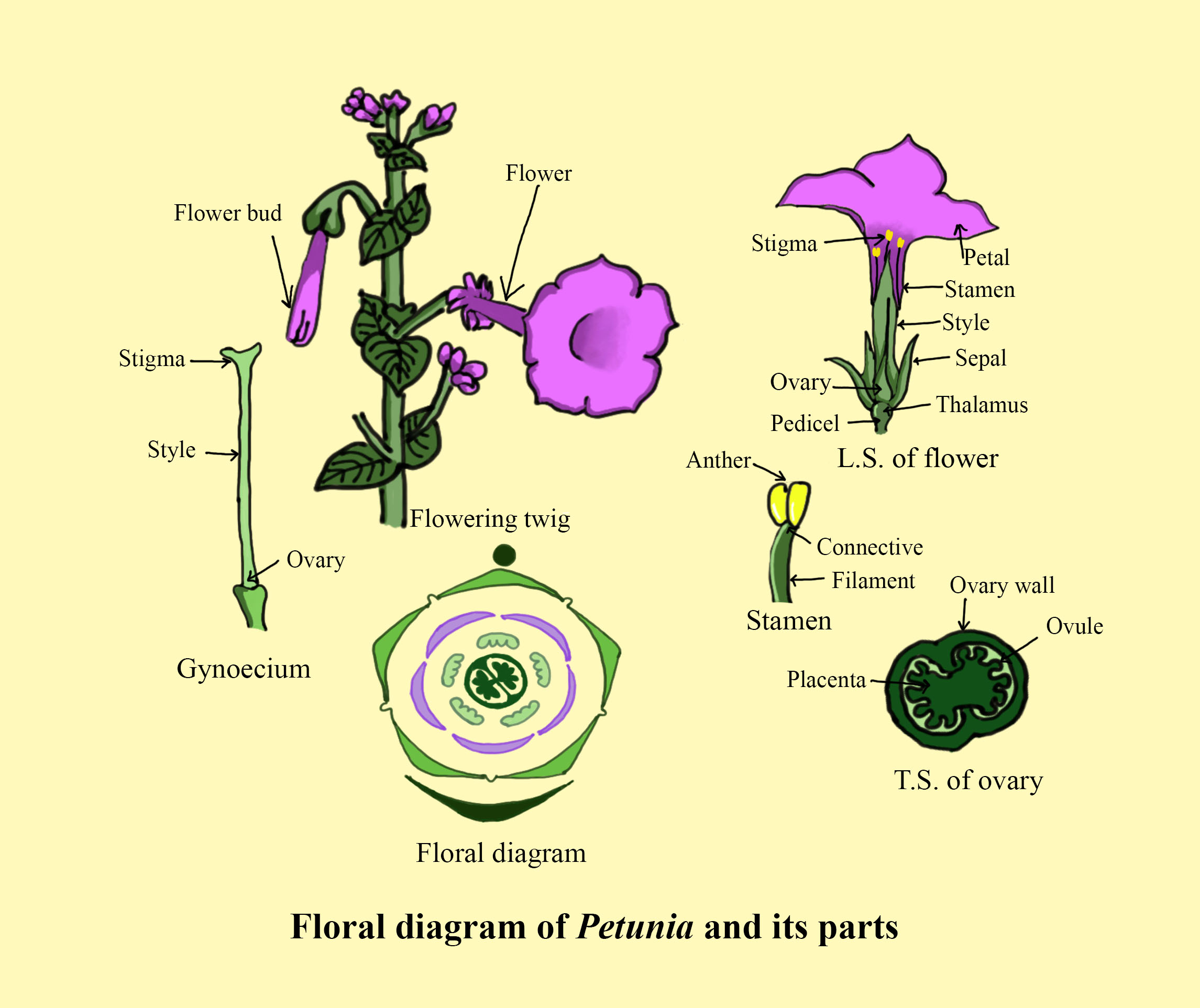
Is the floral formula of

(A) Petunia
(B) Brassica
(C) Allium
(D) Sesbania

Answer
490.2k+ views
2 likes
Hint: This is the floral formula of the flower which comes under the family Solanaceae, subfamily Petunioideae. This flower is native to South America. It is an ornamental plant whose showy trumpet- shaped flowers make it popular for summer flower beds and window boxes.
Complete step by step answer:
This is the floral formula of the flower of Petunia. Characteristics of Petunia are:
- Inflorescence: It is of Cymose type.
- Flower: Flower is bisexual, Ebracteate, actinomorphic, and pedicellate.
- Calyx: Sepals 5 in number.gamosepalous and valvate aestivation is seen.
- Corolla: Petals are 5 in number, twisted or valvate aestivation seen.
- Androecium: Epipetalous and Stamens 5.

- Gynoecium: Syncarpous, Bicarpellary, axile placentation, and ovary is superior.
So, the correct answer is ‘Petunia’.
Additional Information: Species of Petunia are mostly annual herbs. The leaves of these plants are mostly sessile and are usually oval- shaped with smooth margins; some feature fine sticky hairs. The flowers are usually funnel- shaped, consisting of five fused or partially fused petals and five green sepals. Most species are pollinated by insects, though P. exserta is pollinated by hummingbirds. Petunias can tolerate harsh conditions and hot climates, but cannot tolerate frost. They require a minimum of five hours of sunlight a day and flourish in moist soil and conditions of low atmospheric humidity. they're best grown from seed. Watering once every week should be sufficient in most regions.
Note: The Solanaceae family is of great economic importance. They provide food sources like potato, tomato, and brinjal. Datura and Ashwagandha also come under this family and are used medicinally. Petunia is used as an ornamental flower.
Complete step by step answer:
This is the floral formula of the flower of Petunia. Characteristics of Petunia are:
- Inflorescence: It is of Cymose type.
- Flower: Flower is bisexual, Ebracteate, actinomorphic, and pedicellate.
- Calyx: Sepals 5 in number.gamosepalous and valvate aestivation is seen.
- Corolla: Petals are 5 in number, twisted or valvate aestivation seen.
- Androecium: Epipetalous and Stamens 5.

- Gynoecium: Syncarpous, Bicarpellary, axile placentation, and ovary is superior.
So, the correct answer is ‘Petunia’.
Additional Information: Species of Petunia are mostly annual herbs. The leaves of these plants are mostly sessile and are usually oval- shaped with smooth margins; some feature fine sticky hairs. The flowers are usually funnel- shaped, consisting of five fused or partially fused petals and five green sepals. Most species are pollinated by insects, though P. exserta is pollinated by hummingbirds. Petunias can tolerate harsh conditions and hot climates, but cannot tolerate frost. They require a minimum of five hours of sunlight a day and flourish in moist soil and conditions of low atmospheric humidity. they're best grown from seed. Watering once every week should be sufficient in most regions.
Note: The Solanaceae family is of great economic importance. They provide food sources like potato, tomato, and brinjal. Datura and Ashwagandha also come under this family and are used medicinally. Petunia is used as an ornamental flower.
Latest Vedantu courses for you
Grade 10 | MAHARASHTRABOARD | SCHOOL | English
Vedantu 10 Maharashtra Pro Lite (2025-26)
School Full course for MAHARASHTRABOARD students
₹33,300 per year
Recently Updated Pages
Master Class 11 Economics: Engaging Questions & Answers for Success

Master Class 11 Business Studies: Engaging Questions & Answers for Success

Master Class 11 Accountancy: Engaging Questions & Answers for Success

Master Class 11 English: Engaging Questions & Answers for Success

Master Class 11 Computer Science: Engaging Questions & Answers for Success

Master Class 11 Maths: Engaging Questions & Answers for Success

Trending doubts
State and prove Bernoullis theorem class 11 physics CBSE

1 ton equals to A 100 kg B 1000 kg C 10 kg D 10000 class 11 physics CBSE

State the laws of reflection of light

One Metric ton is equal to kg A 10000 B 1000 C 100 class 11 physics CBSE

1 Quintal is equal to a 110 kg b 10 kg c 100kg d 1000 class 11 physics CBSE

Difference Between Prokaryotic Cells and Eukaryotic Cells




